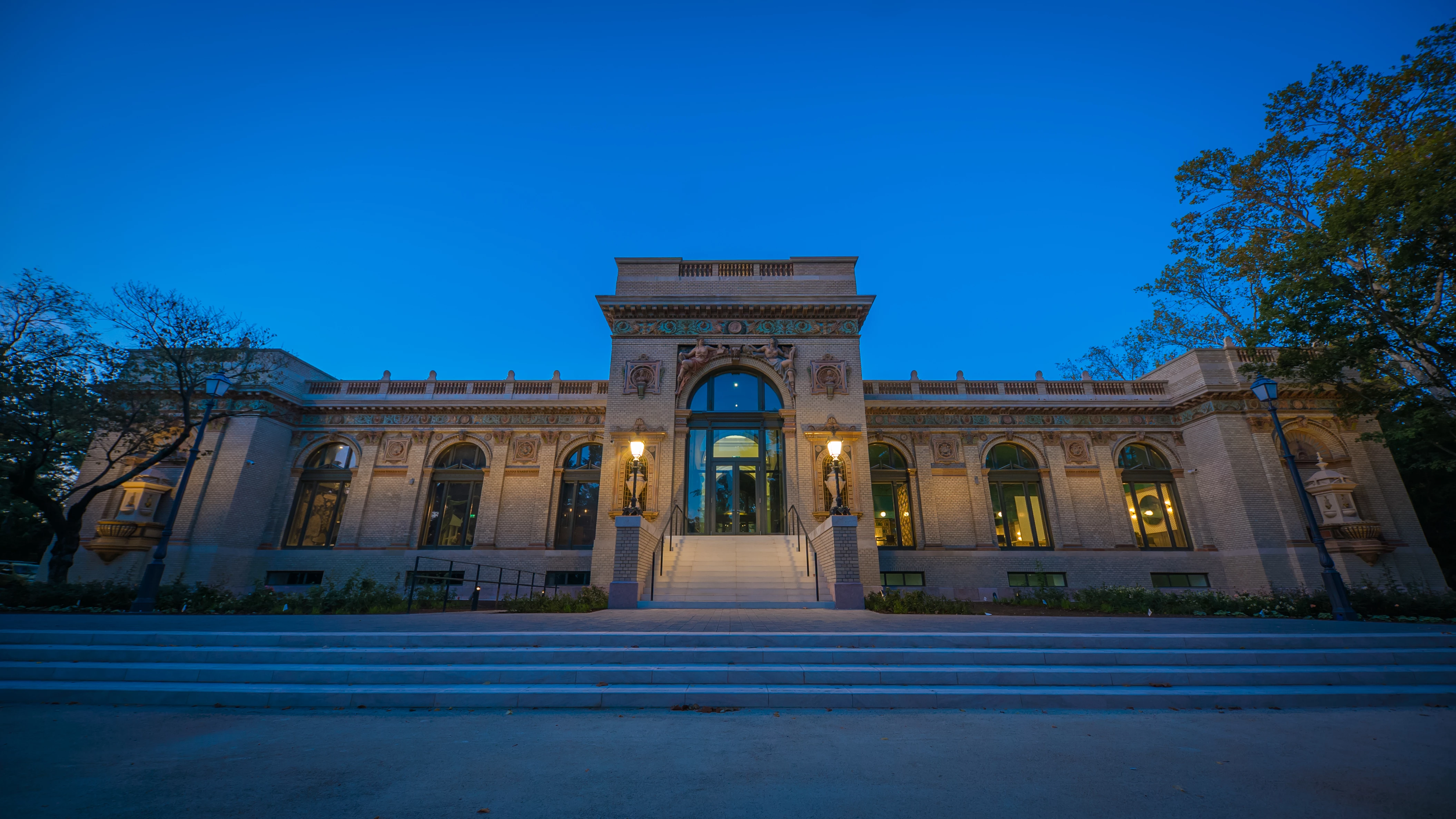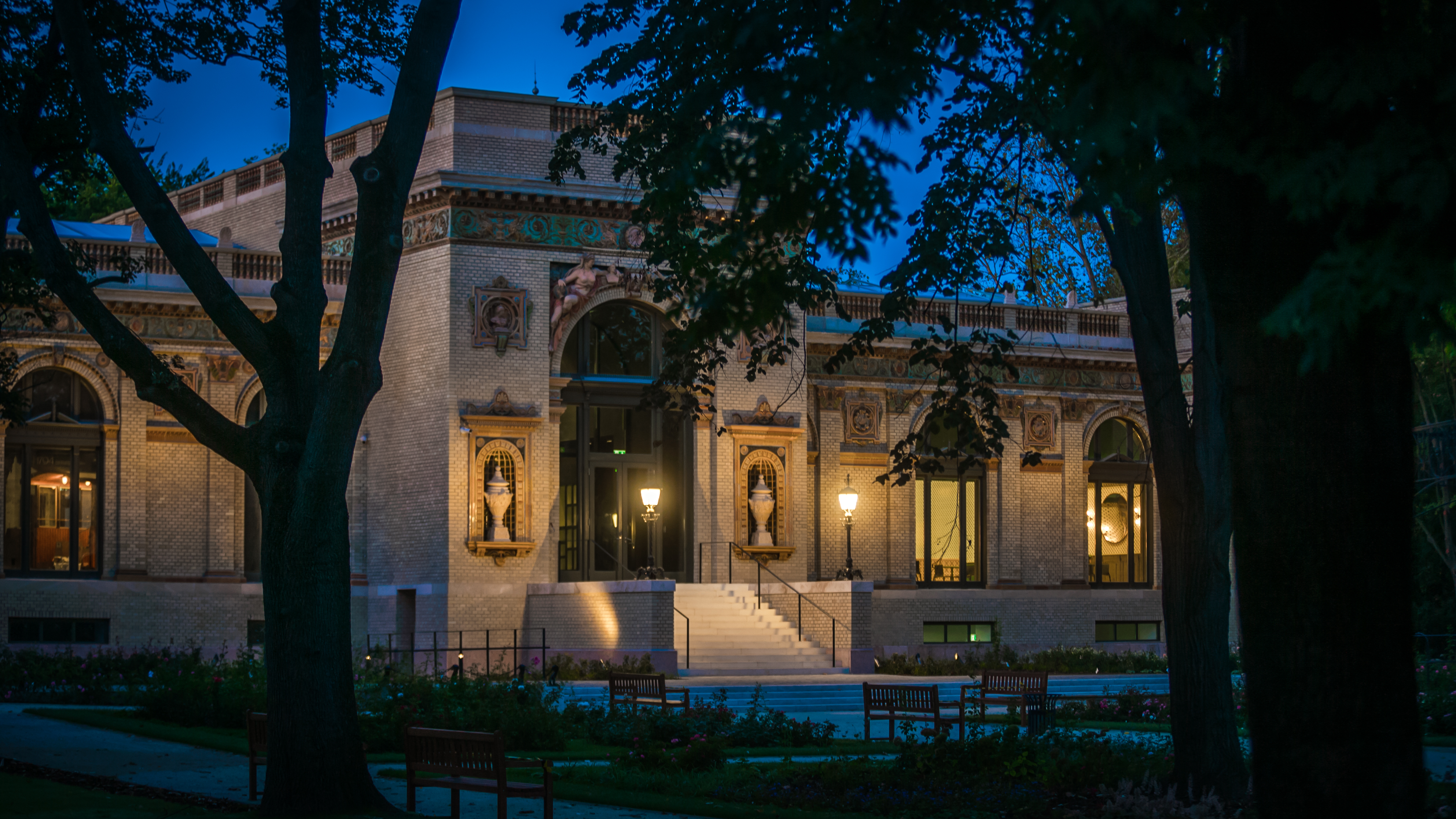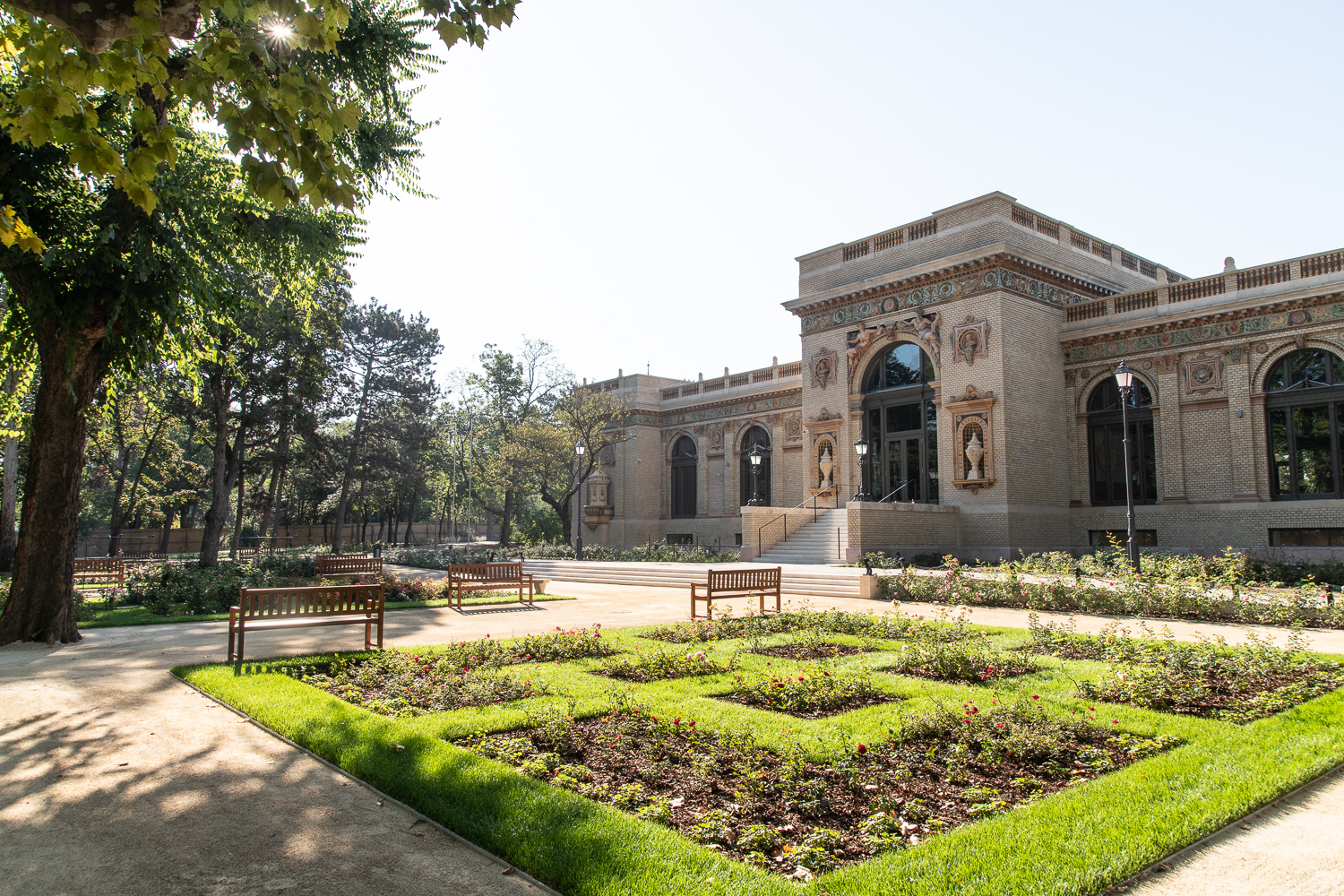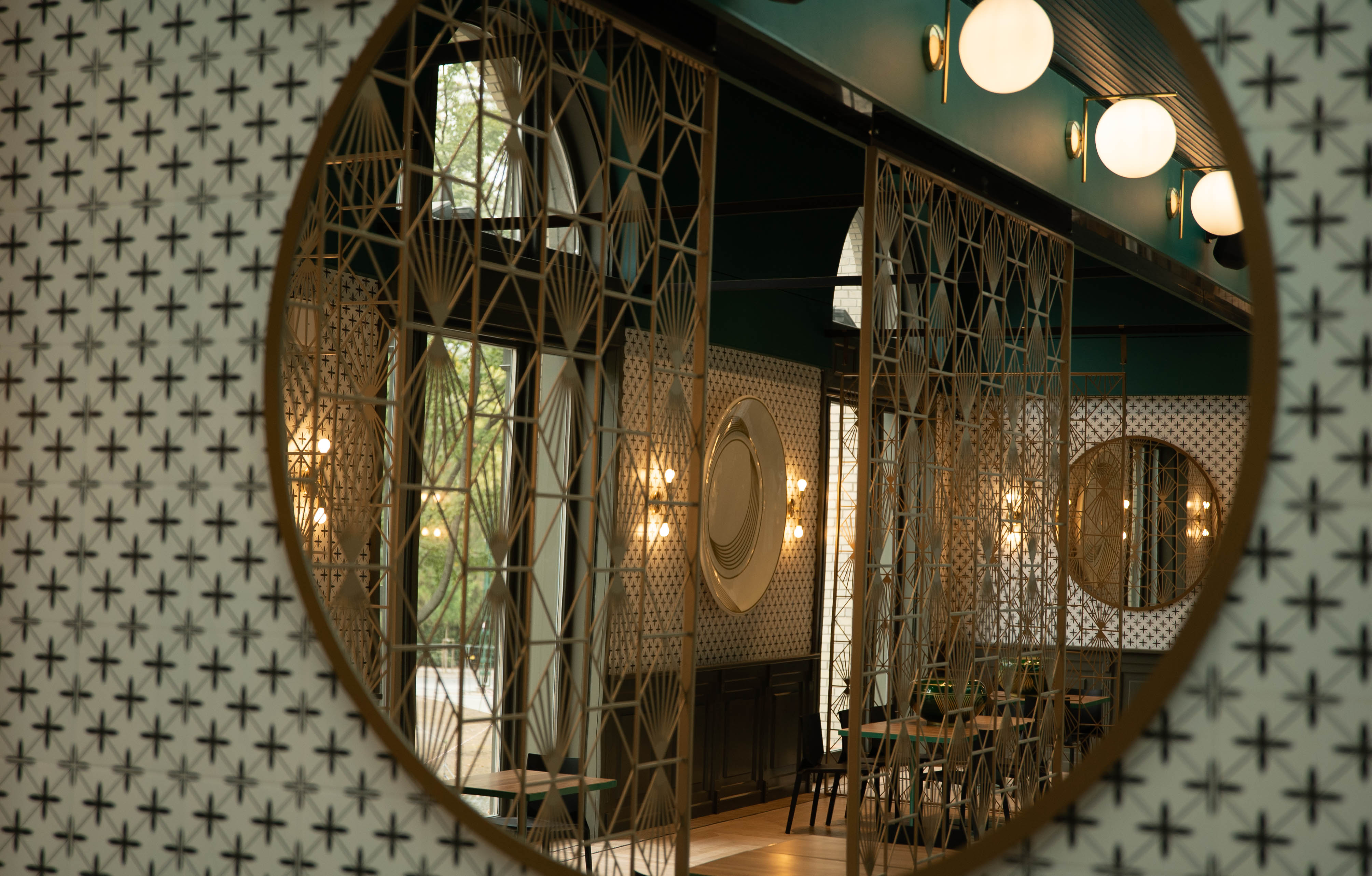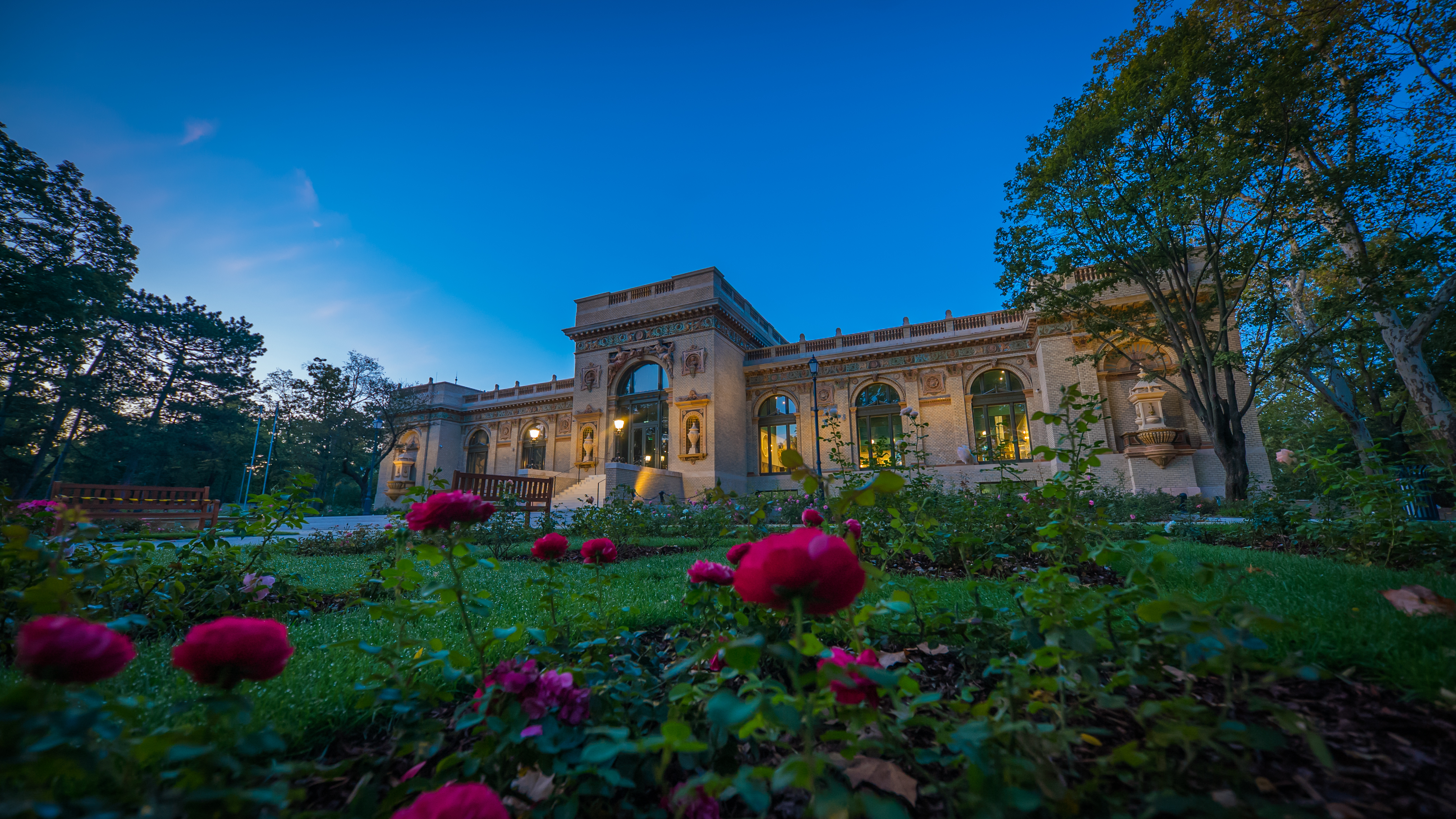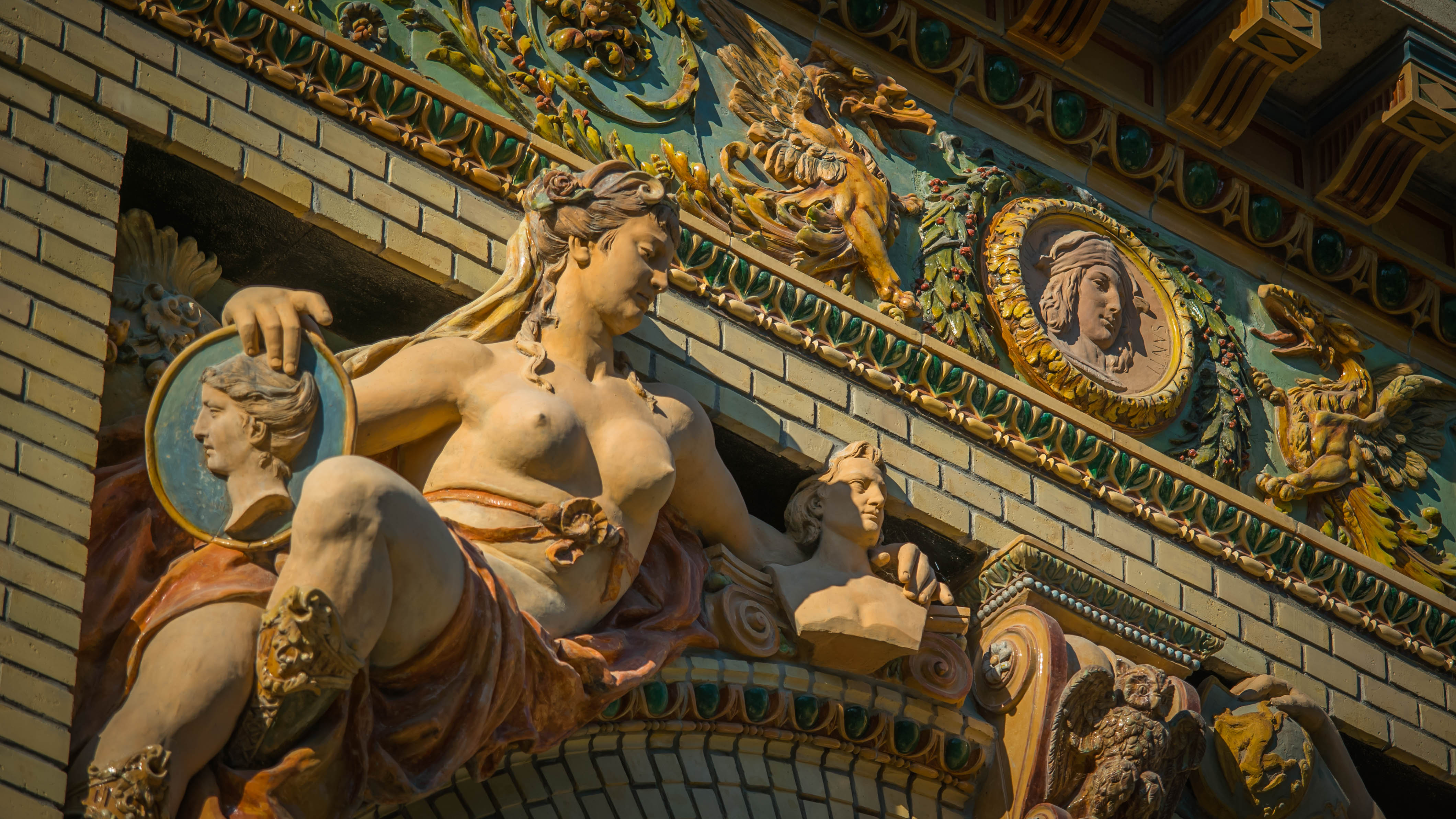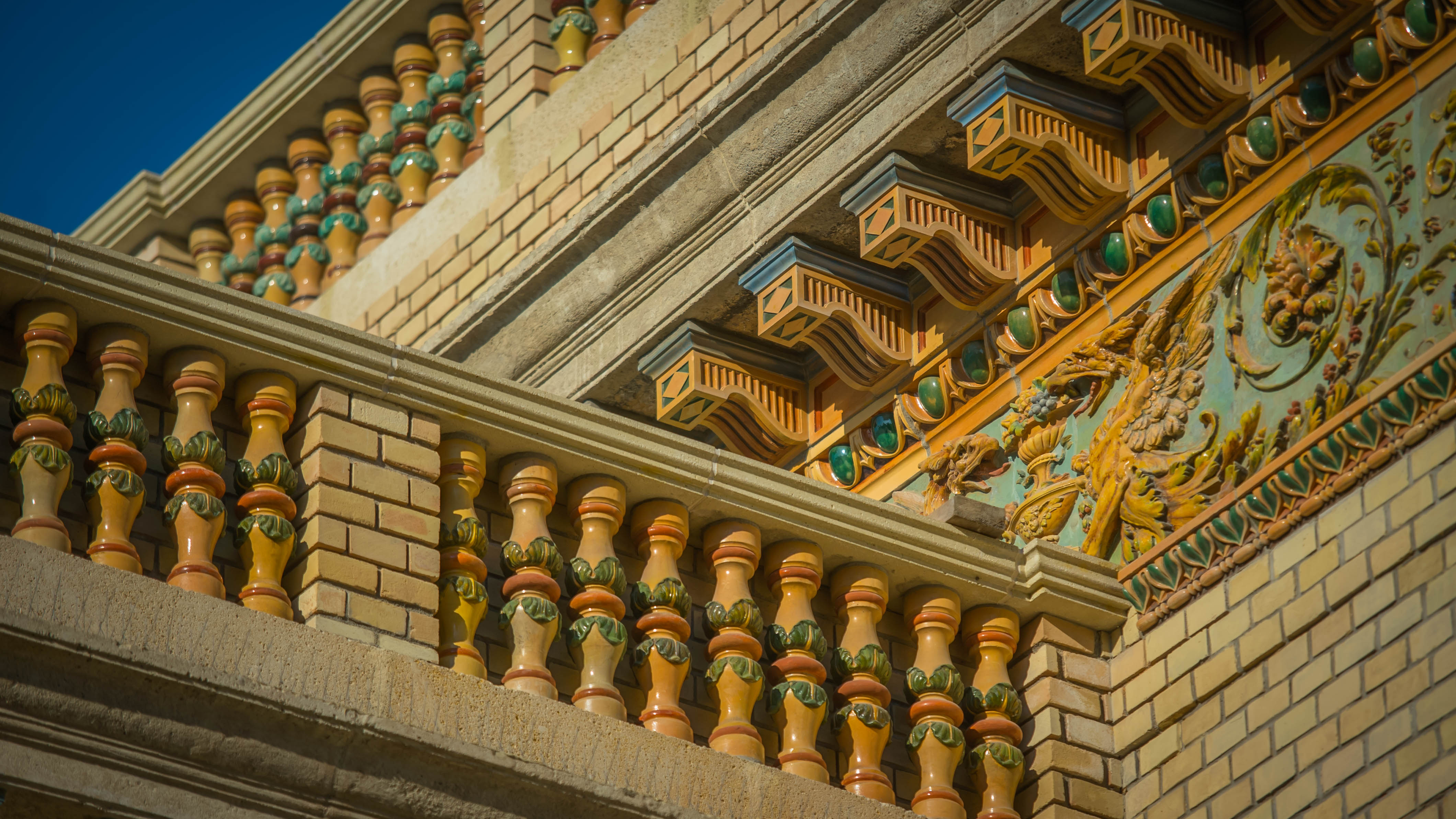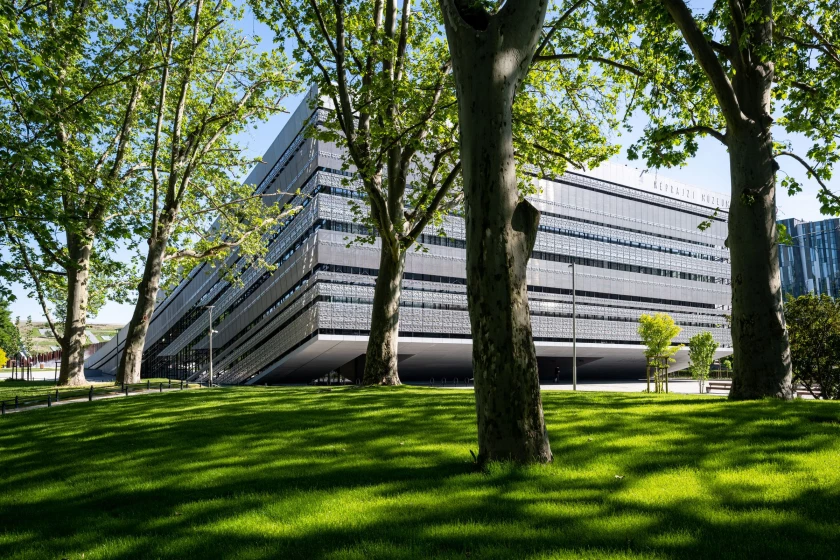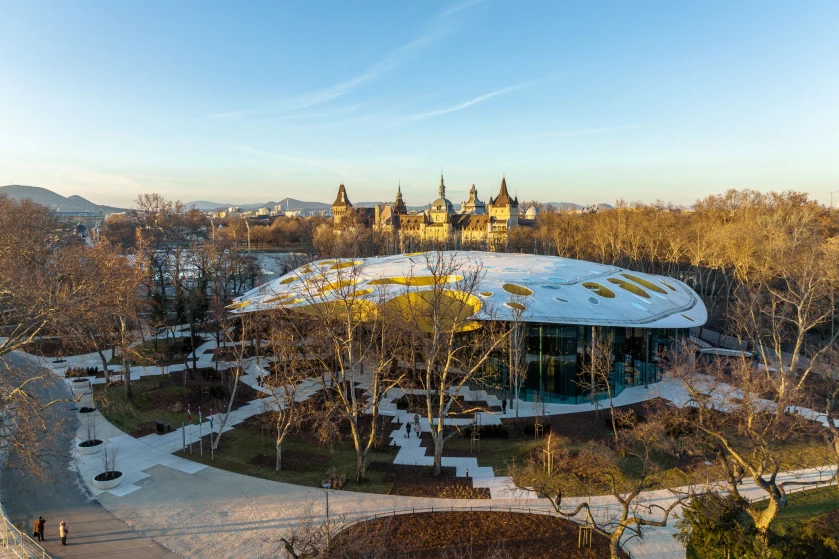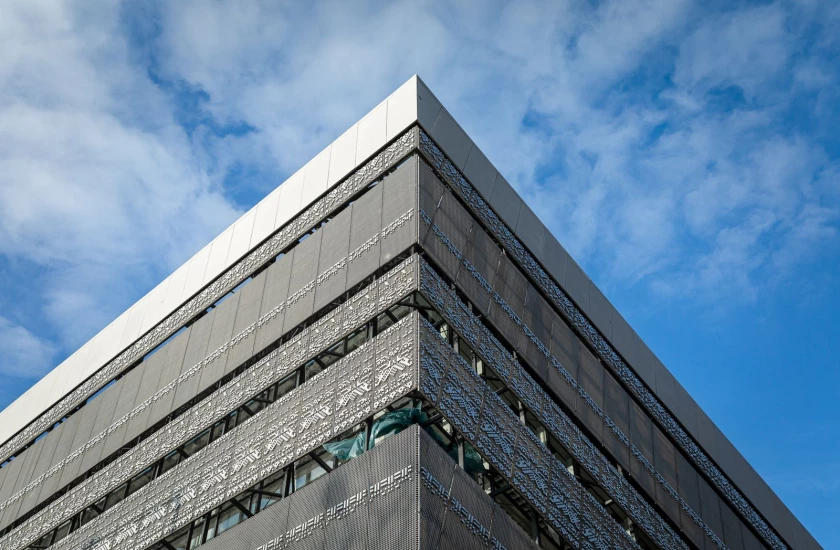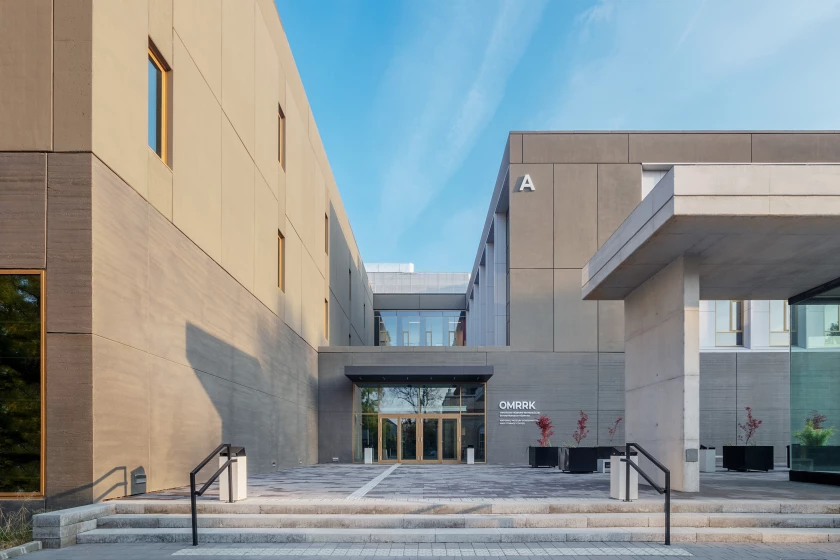The reconstruction of the former Olof Palme House, the oldest building in the Városliget and one of its most imposing monuments, is nearing completion as part of the Liget Budapest Project. The structure has been rehabilitated as The House of the Hungarian Millennium and will open to visitors in the autumn of this year, reported László Baán, the ministerial commissioner for the Liget Budapest Project. The reclamation of the building has been completed, and currently underway, in addition to the preparations for the test run, are the construction of the unique ornamental fountain and the installation of the exhibition for the autumn opening, added Benedek Gyorgyevics, the CEO of Városliget Zrt., the company responsible for implementing the Liget Budapest Project. As part of the renewal of the park's landscaping, a rose garden consisting of 1500 rose plants and evoking the atmosphere of the fin-de-siècle period has been planted in front of the main entrance of the more-than-130-year-old building. The garden will also be graced by a new Zsolnay ornamental fountain. Inside the building, an exhibition presenting the golden age of the Városliget is currently under development, and the café decorated with Zsolnay ceramics is being put into operation. Making use of 21st-century technology and expertise, the exhibition will provide visitors with a multi-faceted experience.
Thanks to the comprehensive renewal of the Városliget, the reconstruction of the former Olof Palme House, a monument more than 130 years old that had deteriorated into an ever more dilapidated state in recent decades, is nearly complete. The reconstruction of the monumental Neo-Renaissance building that began in November 2017 is a major reclamation and rehabilitation project, as this tremendously valuable memento of Hungarian architecture has successfully been restored to its original state based on the designs attributed to Ferenc Pfaff. The House of the Hungarian Millennium is a symbol of the fundamental objective of the Liget Budapest Project: to preserve old treasures while also renewing them in the most modern way possible, Baán stressed. The aim was for The House of the Hungarian Millennium to find its place in the Liget of the future, and to not merely reflect the glory of the past as one of its jewels, but instead to serve as a living, substantive and frequently visited space in the new cultural quarter that is being developed in the Városliget, the ministerial commissioner added.
Thanks to the comprehensive renewal of the Városliget, the reconstruction of the former Olof Palme House, a monument more than 130 years old that had deteriorated into an ever more dilapidated state in recent decades, is nearly complete. The reconstruction of the monumental Neo-Renaissance building that began in November 2017 is a major reclamation and rehabilitation project, as this tremendously valuable memento of Hungarian architecture has successfully been restored to its original state based on the designs attributed to Ferenc Pfaff. The House of the Hungarian Millennium is a symbol of the fundamental objective of the Liget Budapest Project: to preserve old treasures while also renewing them in the most modern way possible, Baán stressed. The aim was for The House of the Hungarian Millennium to find its place in the Liget of the future, and to not merely reflect the glory of the past as one of its jewels, but instead to serve as a living, substantive and frequently visited space in the new cultural quarter that is being developed in the Városliget, the ministerial commissioner added.
Benedek Gyorgyevics, the CEO of Városliget Zrt., pointed out that several elements of the Liget Budapest Project, Europe's largest cultural urban development project, are being delivered this autumn. With the National Museum Restoration and Storage Centre building already delivered in the spring, autumn will bring the opening of The House of the Hungarian Millennium, along with the Rose Garden, a new feature for the Városliget, that has been planted in front of its entrance. Also this autumn, families visiting the Városliget will get to start to use the country's largest and most complex playground, and the comprehensive renovation of the Komárom Star Fortress will also be completed.
The public will soon be able to visit The House of the Hungarian Millennium, as well. Through the work of several dozen restorers, the rich Zsolnay ornamentation on the building's facade has been renewed, and in the course of fitting out the interior areas, architectural alterations made subsequent to the original construction have been removed, thus restoring the original spatial framework. Also ready is the new roof structure, which includes enormous glass surfaces over the two wings, thus illuminating the interior spaces with natural lighting. The building's main entrance has been returned to its original spot, on the side facing out toward Hermina Road.
About the restoration of the Zsolnay ceramics
During the preparatory phase of the building's renovation, a restoration plan extending to every last detail was developed in order to make sure that the stately colour-glazed ornaments on the facade would be returned to their original states from more than 130 years ago. One of the most important guiding principles behind the work was to avoid, whenever possible, moving the ornamental elements, but instead to restore them in their original positions. Around 2,000 elements were rehabilitated on the premises, while an addition 2,500 ceramics were repaired at an off-site restoration studio. Fixtures that were damaged or missing, or which had fallen – accounting for more than 2,000 pieces altogether – were successfully replaced using the original manufacturing technology based on surviving contemporary photos of the building and Zsolnay's sample books. The building's facade was cleaned with great care, using methods that took the various types of materials into account. The Városliget building combines Renaissance motifs and the faun heads evocative of medieval churches, with Egyptian and Greek female figures, as well as Persian winged lions, also present on the richly ornamented facade. Also appearing repeatedly among the crawling vine motifs and dragon-figure flower vases are the portraits of three great artistic geniuses from the Renaissance: Leonardo da Vinci, Raphael and Michelangelo. Thanks to two years of work by several dozen restorers, the building has finally – after long decades – been given the level of care that its original architectural value merited and has regained its original exterior. Now once again one of Budapest's most remarkable buildings, it is ready to welcome visitors.
The public will soon be able to visit The House of the Hungarian Millennium, as well. Through the work of several dozen restorers, the rich Zsolnay ornamentation on the building's facade has been renewed, and in the course of fitting out the interior areas, architectural alterations made subsequent to the original construction have been removed, thus restoring the original spatial framework. Also ready is the new roof structure, which includes enormous glass surfaces over the two wings, thus illuminating the interior spaces with natural lighting. The building's main entrance has been returned to its original spot, on the side facing out toward Hermina Road.
About the restoration of the Zsolnay ceramics
During the preparatory phase of the building's renovation, a restoration plan extending to every last detail was developed in order to make sure that the stately colour-glazed ornaments on the facade would be returned to their original states from more than 130 years ago. One of the most important guiding principles behind the work was to avoid, whenever possible, moving the ornamental elements, but instead to restore them in their original positions. Around 2,000 elements were rehabilitated on the premises, while an addition 2,500 ceramics were repaired at an off-site restoration studio. Fixtures that were damaged or missing, or which had fallen – accounting for more than 2,000 pieces altogether – were successfully replaced using the original manufacturing technology based on surviving contemporary photos of the building and Zsolnay's sample books. The building's facade was cleaned with great care, using methods that took the various types of materials into account. The Városliget building combines Renaissance motifs and the faun heads evocative of medieval churches, with Egyptian and Greek female figures, as well as Persian winged lions, also present on the richly ornamented facade. Also appearing repeatedly among the crawling vine motifs and dragon-figure flower vases are the portraits of three great artistic geniuses from the Renaissance: Leonardo da Vinci, Raphael and Michelangelo. Thanks to two years of work by several dozen restorers, the building has finally – after long decades – been given the level of care that its original architectural value merited and has regained its original exterior. Now once again one of Budapest's most remarkable buildings, it is ready to welcome visitors.
About the Rose Garden
The gardens around The House of the Hungarian Millennium are also being renewed, a process that includes planting the Városliget's only rose garden by the building's entrance, where roses of various types and colours will bring the atmosphere of Budapest's golden age to life. The landscape architects designed this garden comprising 1,500 rose plants to fit in with the character of The House of the Hungarian Millennium, as it will also serve as the building's front garden. Visitors to the painstakingly designed Rose Garden will get a bit of a taste of the new so-called "modern rose varieties" in addition to seeing older, but still popular, varieties from the 17th and 18th centuries. They will also find both roses that can tolerate partial shade and ones that thrive in the sun, as well as perennial flowers that pair well with roses. Signs will be placed beside each of the different varieties indicating the names of the variety and the breeder, the type of plant and the year it was bred. Benches and colourful flowerbeds will be located throughout the area to offer visitors a relaxed environment with flowers, a fountain, places to talk and peace and quiet. The central part of the garden will be a new Zsolnay ornamental fountain, surrounded by entrance and edging flowerbeds featuring flowers of various shapes and colours.
About the exhibition
With a 1250-square-metre footprint, the building is being renewed as a cultural community space with an interactive exhibition space and, on the lowest level, a small auditorium, which will primarily serve as a space for museum pedagogy. The House of the Hungarian Millennium will open with an exhibition focusing on noteworthy events in the history of the Városliget. The visitor-friendly presentations and exhibition elements invite the public on a journey back in time with interactive experience stations, mobile spatial stations and the newest digital technology equipment. In addition to the exhibition space, the building will also house a café that, decorated with Zsolnay ceramics, evokes the atmosphere of the fin de siècle.
The gardens around The House of the Hungarian Millennium are also being renewed, a process that includes planting the Városliget's only rose garden by the building's entrance, where roses of various types and colours will bring the atmosphere of Budapest's golden age to life. The landscape architects designed this garden comprising 1,500 rose plants to fit in with the character of The House of the Hungarian Millennium, as it will also serve as the building's front garden. Visitors to the painstakingly designed Rose Garden will get a bit of a taste of the new so-called "modern rose varieties" in addition to seeing older, but still popular, varieties from the 17th and 18th centuries. They will also find both roses that can tolerate partial shade and ones that thrive in the sun, as well as perennial flowers that pair well with roses. Signs will be placed beside each of the different varieties indicating the names of the variety and the breeder, the type of plant and the year it was bred. Benches and colourful flowerbeds will be located throughout the area to offer visitors a relaxed environment with flowers, a fountain, places to talk and peace and quiet. The central part of the garden will be a new Zsolnay ornamental fountain, surrounded by entrance and edging flowerbeds featuring flowers of various shapes and colours.
About the exhibition
With a 1250-square-metre footprint, the building is being renewed as a cultural community space with an interactive exhibition space and, on the lowest level, a small auditorium, which will primarily serve as a space for museum pedagogy. The House of the Hungarian Millennium will open with an exhibition focusing on noteworthy events in the history of the Városliget. The visitor-friendly presentations and exhibition elements invite the public on a journey back in time with interactive experience stations, mobile spatial stations and the newest digital technology equipment. In addition to the exhibition space, the building will also house a café that, decorated with Zsolnay ceramics, evokes the atmosphere of the fin de siècle.
Recommended News
